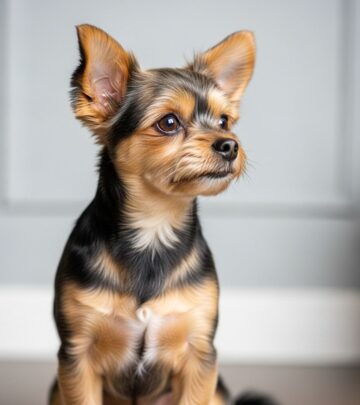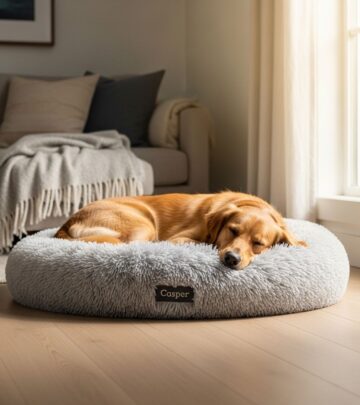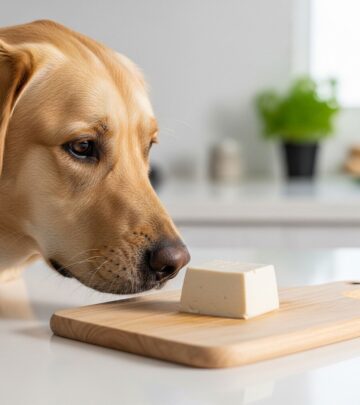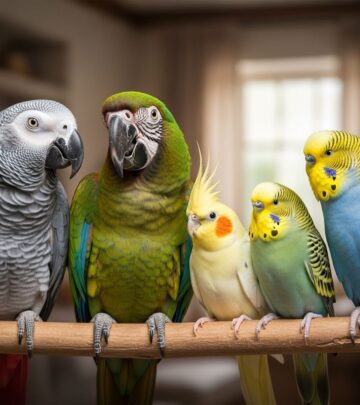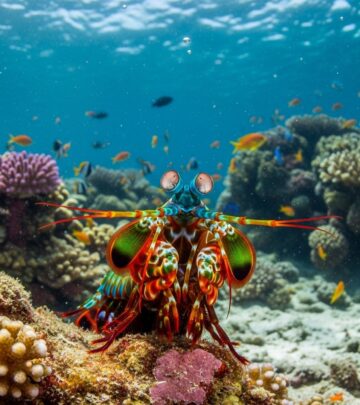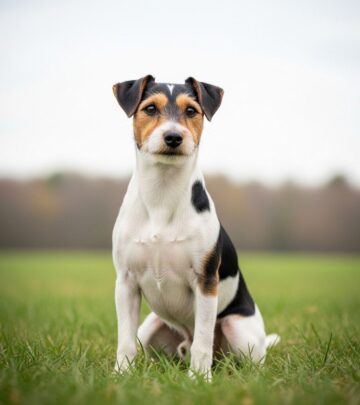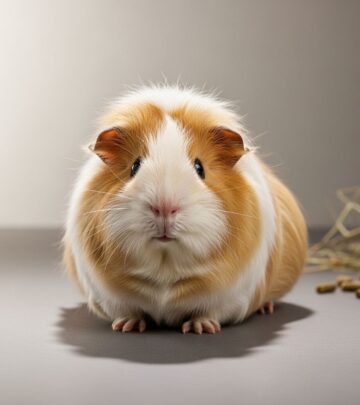Flat-Faced Cat Breeds: 6 Adorable Types And Key Care Tips
Understanding the unique needs and challenges of brachycephalic cat breeds with adorable smooshed faces
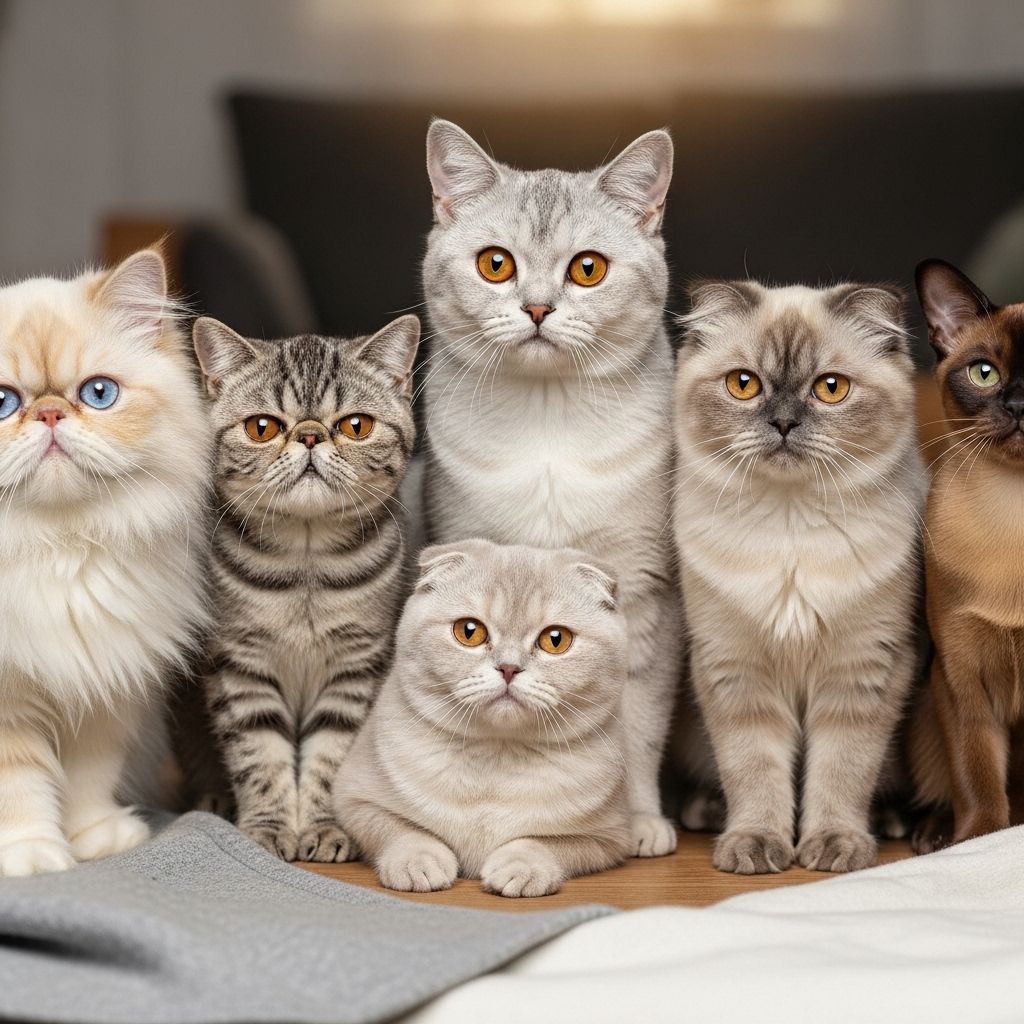
Image: HearthJunction Design Team
Understanding Flat-Faced Cats: What Makes Them Unique
Flat-faced cats, scientifically known as brachycephalic cats, are distinguished by their shortened skulls, resulting in that adorable smooshed face appearance that many cat lovers find irresistible. The word ‘brachycephalic’ comes from Greek roots: ‘brachy’ meaning short and ‘cephalic’ referring to the head. These cats have become increasingly popular over the years due to their distinctive appearance featuring large, expressive eyes, short noses, and rounded faces that give them an eternally kitten-like appearance.
The flat facial structure isn’t just a cosmetic trait—it represents a significant anatomical difference that affects various aspects of these cats’ lives, from how they breathe and eat to their susceptibility to certain health conditions. While their unique appearance has made breeds like Persians and Himalayans highly sought after, it’s important for potential and current owners to understand that this distinctive facial structure comes with special considerations for care.
Popular Flat-Faced Cat Breeds
Several cat breeds exhibit the characteristic flat face, though the degree of facial flatness varies among breeds. Here are some of the most popular brachycephalic cat breeds:
Persian Cats
Persians are perhaps the most recognizable and extreme example of flat-faced cats. This ancient breed originated in Persia (modern-day Iran) hundreds of years ago, possibly as far back as the 1600s. The Persian’s face is extremely flat, with the breed standard stating that when viewed in profile, the forehead, nose, and chin should appear in vertical alignment. Their tiny noses, large expressive eyes, and pansy-like faces are complemented by their long, luxurious coats that require significant grooming. Persians are known for their sweet, affectionate temperaments, quiet voices, and laid-back personalities, making them popular companion cats despite their high maintenance requirements.
Exotic Shorthairs
Often described as the short-haired version of the Persian, Exotic Shorthairs were developed by crossing Persians with American Shorthairs. They maintain the same flat face and body type as the Persian but with a more manageable short, plush coat. These cats share the Persian’s gentle, affectionate personality but tend to be slightly more playful and active. Their smooshed faces combined with their teddy bear-like appearance have earned them the nickname “lazy man’s Persian,” as they require less grooming than their long-haired counterparts.
Himalayans
Himalayans, sometimes called Himmies, are essentially Persian cats with colorpoint patterns. They get their flat faces from their Persian lineage while inheriting their striking blue eyes and colorpoint coats (darker extremities with a lighter body) from Siamese influence. These cats combine the Persian’s sweet temperament with some of the more vocal and interactive traits of the Siamese, though they generally remain calmer than their Siamese ancestors. Like Persians, they require significant grooming to maintain their long, flowing coats.
British Shorthairs
While not as extreme as Persians, British Shorthairs have moderately flat faces with broad heads and chubby cheeks. Their round, copper-colored eyes and perpetual smile give them an appealing, friendly expression. These sturdy cats are known for their dense, plush coats and easygoing, independent temperaments. British Shorthairs are less prone to the severe health issues that affect extremely flat-faced breeds, but still maintain that adorable rounded face appearance many cat lovers adore.
Scottish Folds
Scottish Folds are known primarily for their unique folded ears, but they also tend to have somewhat flatter faces than average cats. Their round heads, large round eyes, and folded ears combine to create an owl-like or baby-like appearance that many find irresistible. Scottish Folds have sweet personalities and tend to be moderately active and playful while maintaining a gentle demeanor.
Burmese
Burmese cats have moderately flat faces with a distinctly rounded head shape. While not as extreme as Persians, their shortened muzzles and large, expressive eyes contribute to their characteristic appearance. These cats are known for being exceptionally people-oriented, forming strong bonds with their humans. They’re typically more active and vocal than Persians, often following their owners around and participating in household activities.
Health Challenges of Flat-Faced Cats
While flat-faced cats are undeniably adorable, their unique facial structure can predispose them to several health issues that potential owners should be aware of. Understanding these challenges is crucial for providing appropriate care and ensuring these special felines can live comfortable, healthy lives.
Brachycephalic Airway Syndrome
The most significant health concern for flat-faced cats is Brachycephalic Airway Syndrome (BAS), a collection of abnormalities affecting the respiratory system. Due to their compressed facial anatomy, these cats often have:
- Stenotic (narrowed) nostrils that restrict airflow
- Elongated soft palate that can partially block the throat
- Hypoplastic (underdeveloped) trachea
- Everted laryngeal saccules that can obstruct airways
These structural abnormalities can lead to breathing difficulties, especially during exercise or in hot, humid weather. Symptoms of BAS include noisy breathing, snoring, coughing, gagging, exercise intolerance, and in severe cases, collapse or cyanosis (blue discoloration of the gums and tongue due to lack of oxygen).
Eye Problems
The prominent, large eyes of flat-faced cats, while adorable, are more vulnerable to injury and various conditions, including:
- Excessive tearing (epiphora) due to blocked tear ducts
- Cherry eye (prolapse of the third eyelid gland)
- Entropion (inward-rolling eyelids that irritate the cornea)
- Corneal ulcers from exposure and inability to close the eyelids fully
- Conjunctivitis (pink eye)
Regular eye examinations and prompt attention to any signs of discomfort or discharge are essential for maintaining eye health in these breeds.
Dental Issues
The shortened jaw structure of brachycephalic cats often leads to dental overcrowding, malocclusion (misaligned teeth), and retention of deciduous (baby) teeth. These issues can increase the risk of periodontal disease, tooth decay, and difficulty eating. Regular dental check-ups and professional cleanings are particularly important for flat-faced cats, as is establishing a home dental care routine when possible.
Skin Fold Dermatitis
The deep facial folds characteristic of extremely flat-faced cats like Persians can trap moisture, food, and debris, creating an ideal environment for bacterial and fungal growth. This can lead to skin fold dermatitis, a painful inflammatory condition that requires regular cleaning and sometimes medical intervention. Owners must check and clean these facial folds regularly to prevent infection.
Temperature Sensitivity
Due to their compromised respiratory systems, flat-faced cats have difficulty regulating their body temperature and are particularly sensitive to heat and humidity. These cats are at higher risk of heat stroke and should be kept in temperature-controlled environments, especially during summer months.
Special Care Requirements for Flat-Faced Cats
Caring for a flat-faced cat requires some special considerations to ensure they remain healthy and comfortable despite their unique anatomical challenges:
Environmental Considerations
Creating an appropriate environment for flat-faced cats involves several important adjustments:
- Maintain moderate temperatures and humidity levels; air conditioning is often necessary during warmer months
- Provide elevated food and water bowls to accommodate their facial structure and make eating easier
- Consider special shallow dishes that don’t press against their faces while eating
- Ensure good ventilation throughout the home
- Minimize stressful situations that might exacerbate breathing difficulties
Grooming Needs
Many flat-faced breeds, particularly Persians and Himalayans, have long, thick coats that require significant grooming attention:
- Daily brushing to prevent mats and tangles
- Regular cleaning of facial folds with veterinarian-recommended wipes or solutions
- Routine eye care to remove tear stains and check for irritation
- Periodic professional grooming, especially for long-haired varieties
- Nail trimming and ear cleaning as part of regular maintenance
Health Monitoring and Veterinary Care
Proactive health monitoring is crucial for flat-faced cats:
- Schedule regular veterinary check-ups, ideally with a vet experienced in brachycephalic breeds
- Monitor breathing patterns and be alert to changes in respiratory sounds or effort
- Watch for signs of overheating, especially during warm weather or after activity
- Implement a dental care routine, including professional cleanings as recommended
- Maintain a healthy weight, as obesity can worsen breathing problems
Ethical Considerations in Breeding Flat-Faced Cats
The breeding of extremely flat-faced cats has become increasingly controversial in recent years, with veterinary organizations and animal welfare groups raising concerns about the health implications of breeding for such extreme facial conformations. Many veterinarians advocate for more moderate facial structures that reduce the risk of health problems while still maintaining breed characteristics.
When considering adding a flat-faced cat to your family, it’s worth researching breeders who prioritize health and moderate facial conformations over extreme flatness. Some breed organizations are working to revise breed standards to encourage more moderate facial structures that allow for better breathing and fewer health complications.
Living With and Loving Flat-Faced Cats
Despite the challenges and special care requirements, flat-faced cats can make wonderful, loving companions. Their sweet temperaments, expressive eyes, and distinctive appearances have endeared them to cat lovers worldwide. With proper care, attention to their unique needs, and regular veterinary monitoring, these special felines can live happy, comfortable lives.
Owners of flat-faced cats often develop a deep appreciation for their quirky personalities and special needs, finding that the extra care required is more than compensated for by the joy these distinctive cats bring to their lives. The characteristic snoring, expressive faces, and affectionate nature of breeds like Persians and Exotics create unique bonds between these cats and their human families.
Frequently Asked Questions (FAQs)
Q: Are flat-faced cats more prone to health problems than other cats?
A: Yes, flat-faced (brachycephalic) cats are generally more susceptible to respiratory issues, eye problems, dental complications, and skin fold infections due to their unique facial anatomy. The severity of these problems typically correlates with how extreme the facial flattening is, with ultra-flat faces experiencing more significant health challenges.
Q: Do flat-faced cats require special food dishes?
A: Many flat-faced cats benefit from shallow, wide food dishes or slightly elevated feeding stations that accommodate their unique facial structure. These special dishes help prevent their flat faces from pressing against the bottom or sides of the bowl, making eating more comfortable and reducing the risk of food getting trapped in facial folds.
Q: How can I tell if my flat-faced cat is having breathing difficulties?
A: Signs of respiratory distress in flat-faced cats include increased respiratory effort (noticeable abdominal movement during breathing), open-mouth breathing, excessive panting, blue-tinged gums, reluctance to exercise, and unusual positioning with extended neck and elbows pointed outward. Any of these symptoms warrant immediate veterinary attention.
Q: Are there any specific environmental considerations for flat-faced cats?
A: Flat-faced cats are particularly sensitive to heat and humidity due to their compromised airways. They should be kept in temperature-controlled environments, especially during hot weather. Good ventilation, access to cool resting spots, and avoiding stressful situations that might increase respiratory demand are all important environmental considerations.
Q: Can the health problems associated with flat faces be surgically corrected?
A: Some health issues related to brachycephaly can be improved with surgical intervention. Procedures such as stenotic nares correction (widening narrowed nostrils) and soft palate resection can improve breathing in severely affected cats. However, these surgeries carry risks and should be discussed thoroughly with a veterinarian experienced in treating brachycephalic animals.
References
Read full bio of Shinta

